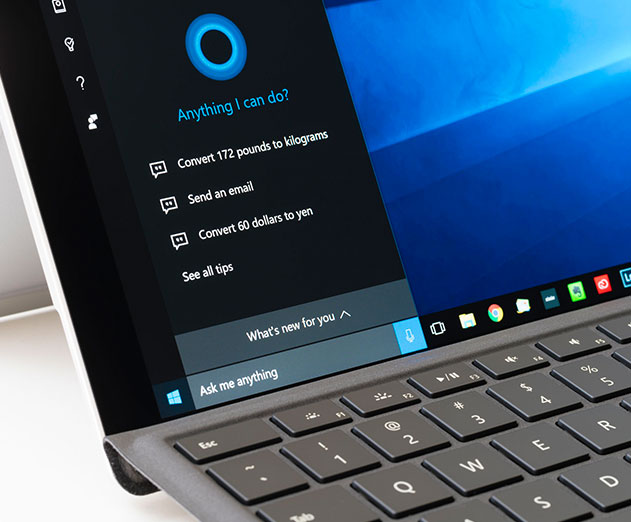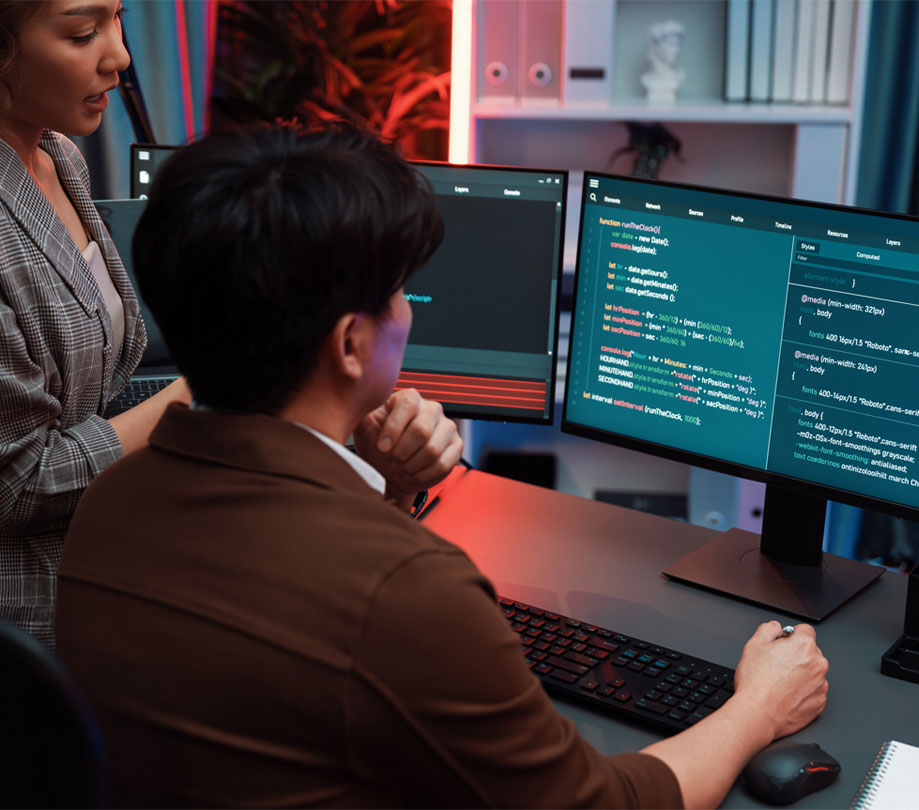Artificial Intelligence
Making voice enabled apps for home or business
Monday, March 12, 2018

|
Richard Harris |
Enterprise voice enabled vs home voice enabled applications and how the industry is finding ways to customize to its needs.
A voice-enabled application is a piece of software integrated with a service like Amazon Lex to add a conversational interface. This is typically a technology that we associate with consumers, thanks to voice assistants like Alexa, Siri, Cortana, and Google Home. However, history tells us that consumers expect the enterprise to mirror their own personal use of technology - as seen by the consumerization of IT movement with mobile devices, for example.
Voice assistants will open up flexibility for companies that want to improve their workflows with quick and simple voice commands. Unlike at home, however, the experience in the workplace will be much richer, as voice-enabled applications will need to understand and respond more complex commands and transactions.
We sat down to chat with Mike Duensing, the Chief Technology Officer and Executive Vice President of Engineering at Skuid, to learn more about voice-enabled applications.
Duensing: Home voice assistants have largely superficial transactions with the user. Sure you can check the weather, connect it to your smart appliances, or maybe start a playlist, but you’re not getting much deeper than that. Voice has far more potential for sophisticated interactions in the enterprise. Voice-enabled enterprise apps developed using Skuid could be used to check on remote facilities, perform diagnostic checks, or pull up valuable account information ahead of a sales call.
Duensing: While some might expect no-code platforms to be off-putting to an IT department used to traditional means of app development, they’re actually a much-appreciated boon to their productivity. The majority of IT departments are completely backlogged with custom apps requested by business leaders and other company departments. Also, the disconnect between IT and the end-user usually results in a rigid, non-intuitive user experience that only partially meets the end-user’s stated requirements. With Skuid, business leaders and decision-makers can create their own app, completely tailored to their own specific needs, without the aforementioned costly and time-consuming headache.
Duensing: Developers need to consider that voice is a new type of user experience. Voice commands replace what traditionally has been performed with a mouse clicks, menus, and forms for navigation and input. Voice is not something you just "add" but rather needs to be developed with proper design. Consider the role of the user. What are they trying to do? What environment will they be in? For example, background noise will create challenges. How can the experience be designed as a natural conversation?
Configuring a bot to will be required to support the voice experience. A bot allows you to configure things like intents (actions to perform), utterances (what the user will say in a command), and slots (parameters such as time, date, size, etc.). Unless you are using Skuid, code will need to be developed to perform the business logic associated with the voice commands. In the end the results are pretty cool and are will to put a smile on your face if it designed and implemented well.
Duensing: Voice interfaces add a dynamic of spontaneity to the user experience by allowing users to relegate complex tasks to a simple voice command. This is a particularly valuable dynamic to the mobile worker especially, as they can review business data on the way to a meeting, without ever cracking open a laptop. With a simple verbal command to their Skuid-made mobile app, a salesman could pull up valuable account information on the way to a new business meeting.

Duensing: Skuid users will soon be able to add voice functionality to an existing enterprise application within the Amazon Lex ecosystem. Without writing any code, users can create custom voice commands with a simple dropdown menu. Skuid acts as a sort of messenger between the two parties, taking the end-user’s request to Lex and reporting back with the relevant information. A salesman could make their own custom app that allows them to draw valuable account data and insights with a command like “What is the total value of this account?”
We see the opportunities for voice-enabled apps expanding to any service available for building conversational interfaces into an application. The appetite for no-code development tools is continuing to accelerate, and in the future we can expect that virtually everyone in the enterprise will be able to customize an app to address their preferences and needs.
Duensing: Look for apps that allow on the go workers to support sales, field service, logistics, and other uses. Essentially the pioneering uses will be with mobile workforces. Long term voice will not be limited to mobile as in-house workers will adopt as well over time, such as customer support and call centers.
Mike has been building SaaS platforms for over 30 years. As a pioneer of internet business software, he’s led teams from small squads to large global organizations in companies including EMC, Documentum, Mindjet, and Standard & Poors. A graduate of UC Berkeley, Mike also enjoys fine coffee.
Read more: http://appdevelopermagazine.com/partner/link/?ref=
Voice assistants will open up flexibility for companies that want to improve their workflows with quick and simple voice commands. Unlike at home, however, the experience in the workplace will be much richer, as voice-enabled applications will need to understand and respond more complex commands and transactions.
We sat down to chat with Mike Duensing, the Chief Technology Officer and Executive Vice President of Engineering at Skuid, to learn more about voice-enabled applications.
ADM: What are the main differences between voice-enabled apps in the enterprise versus those used at home?
Duensing: Home voice assistants have largely superficial transactions with the user. Sure you can check the weather, connect it to your smart appliances, or maybe start a playlist, but you’re not getting much deeper than that. Voice has far more potential for sophisticated interactions in the enterprise. Voice-enabled enterprise apps developed using Skuid could be used to check on remote facilities, perform diagnostic checks, or pull up valuable account information ahead of a sales call.
ADM: How is Skuid working with business and IT decision makers to create and customize voice-enabled applications?
Duensing: While some might expect no-code platforms to be off-putting to an IT department used to traditional means of app development, they’re actually a much-appreciated boon to their productivity. The majority of IT departments are completely backlogged with custom apps requested by business leaders and other company departments. Also, the disconnect between IT and the end-user usually results in a rigid, non-intuitive user experience that only partially meets the end-user’s stated requirements. With Skuid, business leaders and decision-makers can create their own app, completely tailored to their own specific needs, without the aforementioned costly and time-consuming headache.
ADM: What are the chief considerations for developers when creating voice-enabled applications?
Duensing: Developers need to consider that voice is a new type of user experience. Voice commands replace what traditionally has been performed with a mouse clicks, menus, and forms for navigation and input. Voice is not something you just "add" but rather needs to be developed with proper design. Consider the role of the user. What are they trying to do? What environment will they be in? For example, background noise will create challenges. How can the experience be designed as a natural conversation?
Configuring a bot to will be required to support the voice experience. A bot allows you to configure things like intents (actions to perform), utterances (what the user will say in a command), and slots (parameters such as time, date, size, etc.). Unless you are using Skuid, code will need to be developed to perform the business logic associated with the voice commands. In the end the results are pretty cool and are will to put a smile on your face if it designed and implemented well.
ADM: What are the biggest benefits of using voice rather than typing when interacting with an application?
Duensing: Voice interfaces add a dynamic of spontaneity to the user experience by allowing users to relegate complex tasks to a simple voice command. This is a particularly valuable dynamic to the mobile worker especially, as they can review business data on the way to a meeting, without ever cracking open a laptop. With a simple verbal command to their Skuid-made mobile app, a salesman could pull up valuable account information on the way to a new business meeting.

Mike Duensing, CTO and Executive VP
of Engineering at Skuid
of Engineering at Skuid
ADM: Are there any opportunities are there for “citizen developers” to create and customize voice-enabled applications? Why/why not?
Duensing: Skuid users will soon be able to add voice functionality to an existing enterprise application within the Amazon Lex ecosystem. Without writing any code, users can create custom voice commands with a simple dropdown menu. Skuid acts as a sort of messenger between the two parties, taking the end-user’s request to Lex and reporting back with the relevant information. A salesman could make their own custom app that allows them to draw valuable account data and insights with a command like “What is the total value of this account?”
We see the opportunities for voice-enabled apps expanding to any service available for building conversational interfaces into an application. The appetite for no-code development tools is continuing to accelerate, and in the future we can expect that virtually everyone in the enterprise will be able to customize an app to address their preferences and needs.
ADM: What types of voice-enabled apps can we expect will become readily adopted in the enterprise within the next 12-18 months?
Duensing: Look for apps that allow on the go workers to support sales, field service, logistics, and other uses. Essentially the pioneering uses will be with mobile workforces. Long term voice will not be limited to mobile as in-house workers will adopt as well over time, such as customer support and call centers.
About Mike Duensing
Mike has been building SaaS platforms for over 30 years. As a pioneer of internet business software, he’s led teams from small squads to large global organizations in companies including EMC, Documentum, Mindjet, and Standard & Poors. A graduate of UC Berkeley, Mike also enjoys fine coffee.
Read more: http://appdevelopermagazine.com/partner/link/?ref=

Become a subscriber of App Developer Magazine for just $5.99 a month and take advantage of all these perks.
MEMBERS GET ACCESS TO
- - Exclusive content from leaders in the industry
- - Q&A articles from industry leaders
- - Tips and tricks from the most successful developers weekly
- - Monthly issues, including all 90+ back-issues since 2012
- - Event discounts and early-bird signups
- - Gain insight from top achievers in the app store
- - Learn what tools to use, what SDK's to use, and more
Subscribe here









